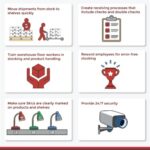
Stay informed net cash flow and proactive with guidance on critical tax considerations before year-end. Given that the price of computer hardware and cloud services has been ever-decreasing, what exactly stands in the way of companies being more data-driven? The lecturer is very concise and goes through concepts in depth by showing examples that build on top of previous knowledge and used dataset that was previously introduced. Time to completion can vary widely based on your schedule, most learners are able to complete the Specialization in 5-7 months. The University of Illinois at Urbana-Champaign is a world leader in research, teaching and public engagement, distinguished by the breadth of its programs, broad academic excellence, and internationally renowned faculty and alumni.
Module 6: Analytic Tools in Excel 1
- Data analytics, machine learning, and AI techniques are replacing the rules-based approach used previously by banks and credit card companies to detect payment fraud.
- Accountants with a background in data analytics qualify for a far greater range of positions in accounting and finance.
- This course is completely online, so there’s no need to show up to a classroom in person.
- It enables organisations to stay ahead of the competition by understanding customer behaviour, market trends, and emerging opportunities.
- This enables you to develop customised algorithms and data models suitable for handling extensive datasets.
First, you will perform a correlation analysis to identify two-way relationships, and analyze correlations using a correlation matrix and scatter plots. You will then build on your knowledge of correlations and learn how to perform regression analysis in Excel. Finally, you will learn how to interpret and evaluate the diagnostic metrics and plots of a regression analysis. Deciphering intricate analyses and transforming them into practical insights can be tough for those lacking a robust data science foundation. It’s simple to use for basic accounting tasks like creating budgets, making financial statements, and building balance sheets.
CPA Pathways Graduate Certificate
This change is an attempt by accountants to better represent their clients and for accounting firms to add a broader range of skills they can tap to serve their business customers. Since their inception, the accounting and finance industries have proven their worth to businesses by delivering new forms of value, whether through higher revenue or more efficient operations. No technology offers more promise for delivering innovative sources of value to businesses than advanced data analytics. Specifically, we’re going to use prediction models to try to predict how the financial statements would transfer price definition look if there were no manipulation by the manager. First, we’ll look at Discretionary Accruals Models, which try to model the non-cash portion of earnings or “accruals,” where managers are making estimates to calculate revenues or expenses.
The growing adoption of data analytics in accounting and finance firms broadens the responsibilities of the professions while making their roles more important for supporting business decisions. While many accounting and financial services companies are planning to use data analytics and other new technologies, the rate of implementation remains uneven, according to the Institute of Management Accountants. For self-service reporting, 48% of firms have completed implementation, while 31% plan to implement. Predictive analytics and prescriptive analytics are now required because they provide actionable insights for companies. Accountants need to increase their competence in these areas to provide value to their organizations. One of the most common applications of predictive analytics is the computation of a credit score to indicate the likelihood of timely future credit payments.
Helping an airline improve safety, reduce costs, and better serve customers
You’ll also investigate if the effect of an independent variable depends on the level of another independent variable by including interaction terms in the multiple regression model. Another aspect of this module is learning how to evaluate models, regression or otherwise, to find the most favorable levels of the independent variables. For models that explain revenue, the most favorable levels of the independent variables will maximize revenue. In contrast, if you have a model that describes costs, like a budget, then the most favorable levels of the independent variables will minimize costs.
The faculty at Franklin are experts in the field of data analytics and they work with students all over the world to bring the specifics of accounting data analytics to them in a very hands-on, relevant, current and practical way. Collecting and collating large amounts of data takes time, discipline and a certain set of skills. Their knowledge and experience enables them to dive deep into the data and extract the value in it. The true value of data analysis comes not at the point when the data is compiled, but rather when decisions are made using insights derived from the data. To uncover these insights, a data scientist must first understand the business context.
Accountants who assist, or act as, investment advisors use big data to find behavioral patterns in consumers and the market. These patterns can help businesses build analytic models that, in turn, help them identify investment opportunities and generate higher profit margins. In practice, this approach transforms the accounting platform into a dynamic dashboard that provides not only a snapshot of the business’s current financial status but also actionable insights that can drive growth. From identifying trends in sales and expenses to optimizing cash flow and managing inventory, up-to-date, accurate accounting data offers many benefits. They compute sums, averages, and percent changes to report sales results, customer credit risk, cost per customer, and availability of inventory. Accountants also are generally familiar with diagnostic analytics because they perform variance analyses and use analytic dashboards to explain historical results.
What will I get if I subscribe to this Specialization?
Prescriptive analytics uses a combination of sophisticated optimization techniques (self-optimizing algorithms) to suggest the most favorable courses of action to be taken. Accountants welcome opportunities to automate many of their work processes and are learning new data analytics skills to improve the services they offer their clients. This graphic introduces these learning opportunities and ranks them by their potential for skill development. At larger accounting firms, analytics is used regularly in tax, auditing, consulting, and risk management. Ramlukan said data analytics is a skill that can be applied to many scenarios across all service lines. Employees who have this skill are therefore both very versatile and valuable to the organization.

Many retail and e-commerce businesses tend to focus mainly on customer-centric metrics, such as product sales volume or individual product margins. While crucial, these metrics often result in a myopic what is the available balance in your bank account view of a company’s performance. This tunnel vision overlooks broader, equally vital metrics — such as overall revenue, gross and net margins, sales tax, platform fees, and others — that together, paint a much more comprehensive picture. The real value, however, lies in predictive (“what will be”) and prescriptive analysis (“What should we do?”). Data analytics is highly relevant as companies and industries transform to take advantage of technological innovations, and as expectations of regulators and investors with regard to data availability and analysis are increasing. In this module, you’ll be guided through a mini-case study that will illustrate the first three parts of the FACT model, with a focus on the C, or calculations part of the FACT model.
